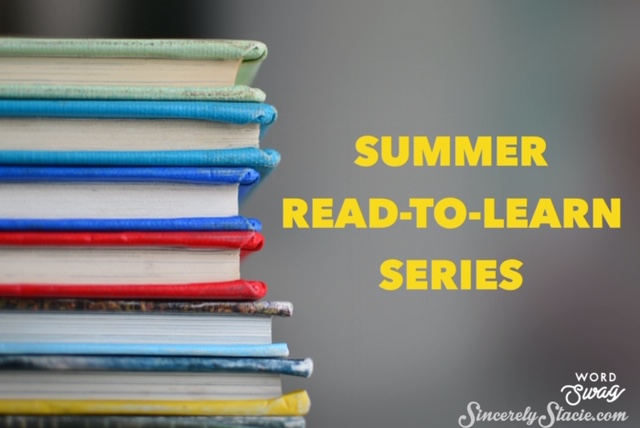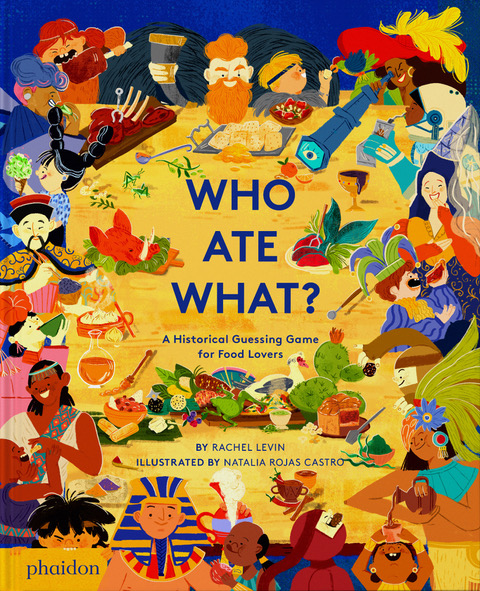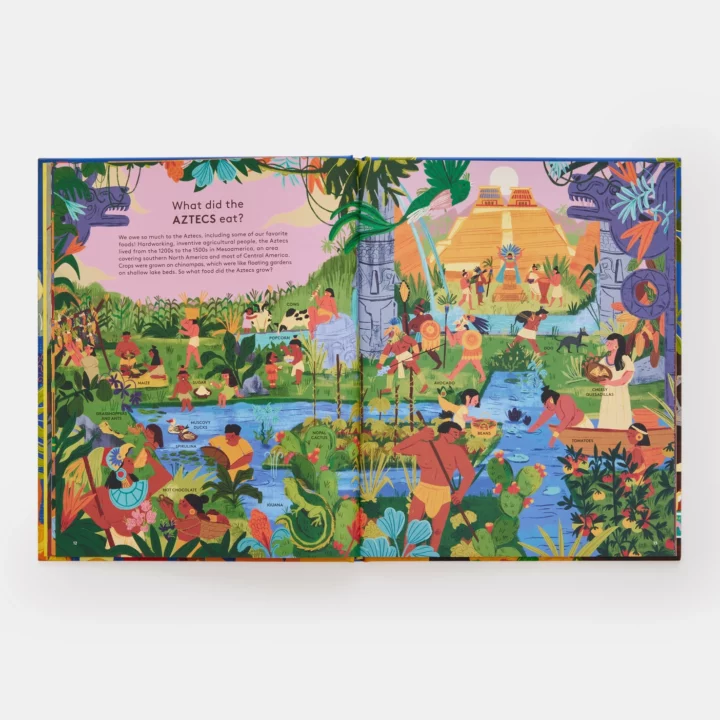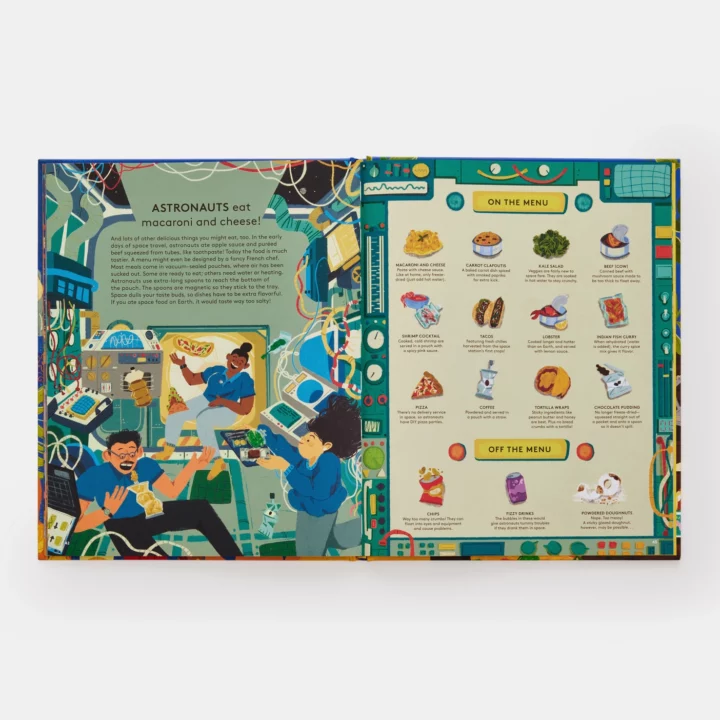
All summer I’ll be sharing books for kids of all ages on topics that will interest them or offer them a new interest to learn about. Most of the time these will be nonfiction books, but sometimes we can learn from fictional stories too. I frequently learn from books sent during a historical period because usually the fictional story is based on real events.
So, I hope you will stay tuned to these posts. They will always have Summer Read-to-Learn in the title and in the tags. There will be books from some of my favorite publishers like National Geographic, Phaidon, Chronicle Kids, Prestel, and many others.
To see all the posts from my Summer Read-to-Learn series, click HERE.

WHO ATE WHAT?
A Historical Guessing Game for Food Lovers
By: Rachel Levin
Illustrated by: Natalia Rojas Castro
Published: April 5, 2023
Publisher: Phaidon Press
Non-Fiction
Kids can travel back in time and peer into the lives of Cavepeople, Ancient Egyptians, Aztecs, Vikings, Medieval Monarchs, Pirates, Qing Emperors, and the Ethiopian Empress Taytu to see what these people ate during their meals. Kids will also learn about what (and how) Astronauts eat and then travel into the future to see what might be on our plates someday soon.
It’s hard to imagine life without a grocery store, let alone being able to order pretty much any food we want with the click of a button. But, kids today might be surprised to learn that if people in the past wanted to eat, they had to kill it, grow it, or gather it from the woods themselves. Aztecs ate lots of corn-related foods as well as fruits, vegetables, and beans they could grow. What might be surprising is that they ate cactus. I’m unsure how, but it was believed to cure many illnesses.

Kids will likely be surprised that beef wasn’t an item on the food list until after the 1500s which also means….no dairy like cheese, butter, and milk. Each time period shares an illustration of their home, garden, or market with various items labeled on the pages. Then a menu shares illustrations of food items like eggs, grasshoppers, fish, fruit, and vegetables. You will also find items these people did not eat either because it wasn’t available yet or because their customs didn’t allow them.
Looking ahead, food for astronauts in space has come a long way since Neil Armstrong first lifted off. Now, astronauts have a wide variety of food to enjoy while hanging out in space such as salads, tacos, pizza, and macaroni and cheese. What doesn’t work in space still to this day? Chips, powdered doughnuts, and bubbly drinks. I wonder if chips are one of the first things astronauts crave when they return from space.

The food of our future seems to be more inventive with new forms of plant-based meat or food coming from laboratories. We may see more insects on the menu or even more plant-based restaurants. Much of it will be based on trying to live and eat to help sustain our planet. The end of the book includes a few recipes like Xocoatl Hot Chocolate from the Aztecs which is tasty or Hardtack from the Pirates which may need some peanut butter to make it edible.
Rachel Levin is a food journalist and mother of two based in San Francisco. She writes for Eater, The New Yorker, and The New York Times. Check out her website, HERE.
Natalia Roja Casatro is an illustrator from Bogotá, Columbia. Her illustrations are inspired by the colors and nature of Colombia and the streets of Bogotá, where she lives. Food is very important to her, especially the “ajiaco,” a Colombian soup that warms the body on cold days, made by her mom, her favorite chef.
To purchase a copy of WHO ATE WHAT?, click the photo below:

Other posts you might like:
Thanks to the publisher for sending a copy of this book for the purpose of this review. This review is my honest opinion. If you choose to make a purchase through the above links, I may receive a small commission without you having to pay a cent more for your purchase.
Posted Under Book Review, Children's books, food, Natalia Rojas Castro, non-fiction, Rachel Levin, Summer Read-to-Learn
